In this Article
Toggle
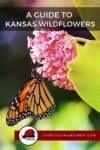
When I spend time on the trails and in the parks of greater Kansas City, I love scouting for beautiful wildflowers in Kansas. Use this guide to help you identify which Kansas wildflowers are blooming by season: spring, summer, and fall.
I hate winter in the Midwest. I hate the cold. I hate being cold. And once the initial excitement of the first snow of the season has come and gone, I’m already counting the seconds until spring.
But one of the reasons I still live in America’s heartland — you know, besides the affordable housing, limited rush hour traffic, and friendly people — is because it’s absolutely gorgeous the other three seasons. From early March until at least mid-November, Kansas native wildflowers replace the dreary grey of winter with an ever-changing palette of colors.
Native Kansas flowers come in nearly every color of the rainbow, from sunny yellow to deep purple. Use this guide to quickly identify the blooms in a field of wildflowers when you hike the trails or otherwise explore Eastern Kansas and Western Missouri.
Related Article: Six Midwestern Myths that People in “Flyover” States are Sick of Hearing
To share the beauty of Eastern Kansas with you, I’ve created this Kansas wildflower guide. It is designed to help you identify the most common wildflowers and is organized by season so that you know which Kansas wildflowers are in bloom whether you visit Kansas City or other parts of Eastern Kansas in:
- March for basketball tournaments,
- April for Opening Day at the K,
- June for a NASCAR race,
- September for the Plaza Art Fair, or
- October for the American Royal.
To be clear, Kansas City straddles two states, Kansas and Missouri. The big, annual events listed above all take place on the Missouri side of the state line. But the good news is that the wildflowers in Kansas City don’t care what side of the Missouri River or State Line Road they’re on, so you can see them in both Eastern Kansas and Western Missouri.
Sage Advice: If you encounter a wildflower in Kansas that is not in this guide, check out the Kansas Wildflowers & Grasses website. It’s maintained by Kansas State University’s Michael Haddock.
Related Article: 10 Things to do for FREE in Kansas City

To help offset the costs of running EverydayWanderer.com, you’ll find affiliate links lightly sprinkled throughout the site. If you choose to make a purchase via one of these links, there’s no additional cost to you, but I’ll earn a teeny tiny commission. You can read all of the legal blah blah blah (as my little niece says) on the full disclosure page.
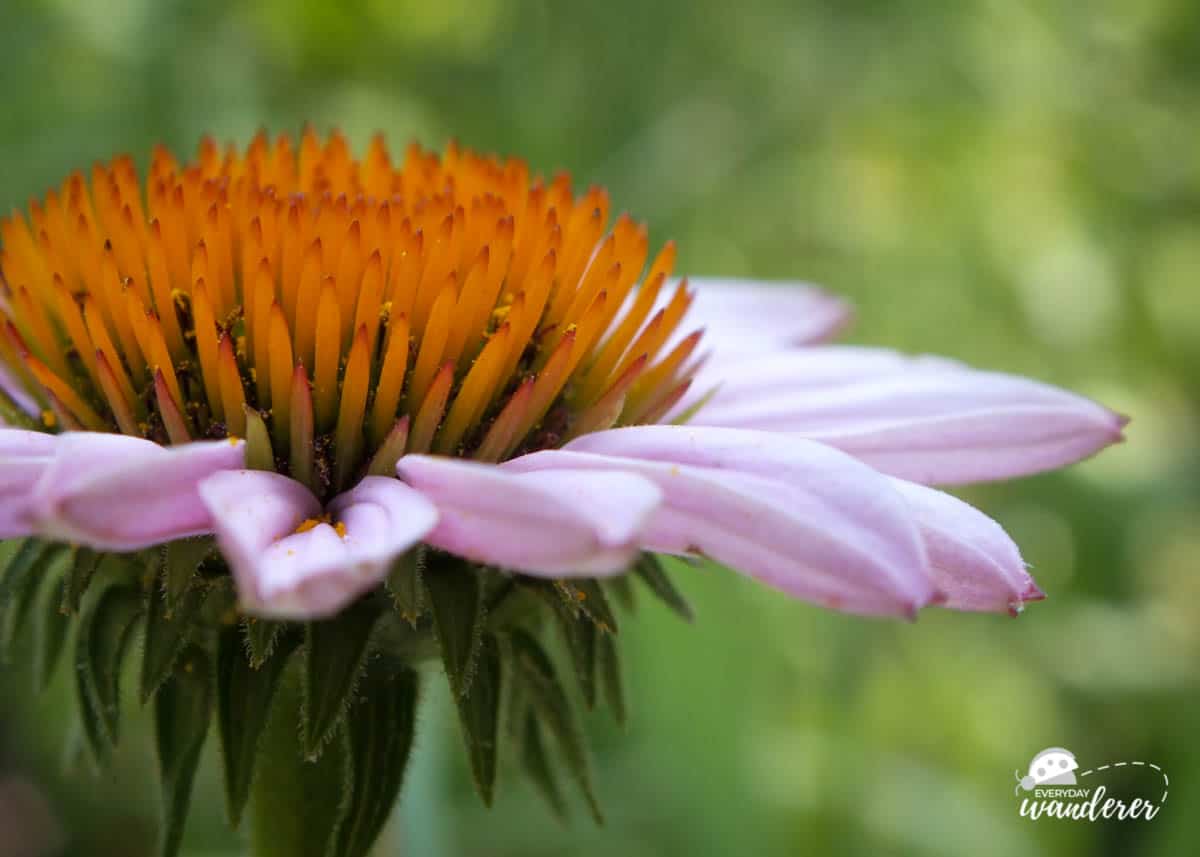
To help offset the costs of running EverydayWanderer.com, you’ll find affiliate links lightly sprinkled throughout the site. If you choose to make a purchase via one of these links, there’s no additional cost to you, but I’ll earn a teeny tiny commission. You can read all of the legal blah blah blah (as my little niece says) on the full disclosure page.
Where to Find Kansas Wildflowers
Hiking one of the greater Kansas City area’s nature trails or spending time in one of the parks is one of the best ways to see Kansas wildflowers.
Some of my favorite outdoor areas in Kansas City to watch for wildflowers on the Kansas side include:
- Black Hoof Park / Lake Lenexa – with miles of both paved and natural trails surrounding Lake Lenexa, this is probably one of my favorite places to see Kansas wildflowers. If you visit within an hour of dawn or dusk, you’re also likely to see deer and other creatures in their natural habitat.
- Indian / Tomahawk Creek Trail – connecting large sections of Leawood and Overland Park, Kansas this beautiful trail continues to expand.
- Mill Creek Streamway Park – the 14 miles of bicycle and walking trails that run from Shawnee, Kansas to Olathe, Kansas nearly always showcase the Kansas wildflowers in bloom.
- Shawnee Mission Park – the most visited park in the state of Kansas. With 1,600 acres to explore, you’re sure to spot these Kansas native wildflowers at Shawnee Mission Park.
Sage Advice: Here are trail guides to all of the hiking and biking trails in Johnson County, Kansas.
In addition to hitting the trails, you will also see Kansas wildflowers incorporated into commercial and residential landscaping or growing wild in natural areas.
To incorporate the perennial beauty of native Kansas plants into your yard, sprinkle Kansas wildflower seeds in April and May. You’ll be able to enjoy the low-maintenance color of these beautiful blooms for years to come!

Spring Wildflowers in Kansas
While they may still be in bloom in early summer, these Kansas wildflowers generally bloom within the spring months of March, April, and May.

Black-Eyed Susan
These yellow flowers with a dark brown “eye” can be found in fields, on prairies, and along the roadside throughout the eastern half of Kansas. Black-Eyed Susans are generally one to three feet tall and flower from May through September. They are biennial, so look for a much stronger presence of this Kansas wildflower every other year.
Sage Advice: There’s nothing like the natural beauty of the great outdoors, and these hiking quotes inspire me to make more time to get outside more often.

Bloodroot
Part of the poppy family, these small, delicate native wildflowers bloom in early spring making them one of the first wildflowers after winter in Kansas. Bloodroots can be found in eastern Kansas woods and remain close to the ground, usually standing no taller than two to four inches high. The white petals of these spring wildflowers close at night and reopen in the morning.

Bluebell
Watch for these bell-shaped, bluish or purplish native spring wildflowers along streams and river banks. You can also spot them in wooded clearings where they receive at least partial shade.
Native Americans steeped the roots of the bluebell plant in boiling water (like tea) and used the liquid to treat a variety of illnesses from poisoning to whooping cough.

Mallow
Also known as hibiscus, mallows of different varieties and colors are found throughout Kansas, including the pink-colored rose mallow and the yellow-colored Indian mallow. These tall Kansas wildflowers can be found in wet marshes and marshes from April through October.

Phlox
Like mallows, phlox come in several varieties and colors. Look for this spring wildflower in April and May adding touches of lavender, pink, and magenta to the greening spring landscape. Look for phlox in the damp, open fields of wooded areas.
Eastern Redbuds Blooming in Kansas in the Spring
Bonus Tip: Redbud
While not a Kansas wildflower, redbuds are another common spring sight in Eastern Kansas. Look up to see these delicate pink blossoms on trees that are the Kansas City version of cherry blossom season in Washington, DC.
Kansas Native Wildflowers that Bloom in Summer
While some of the spring wildflowers may still be in bloom in the early summer, here are the additional blooms you can scout for during the months of June, July, and August.

American Bellflower
Look for these blueish-purple flowers in Kansas along stream banks and other damp, shaded sites. Bellflowers grow to a height of two to six feet, and white-tailed deer like to snack on its leaves.
Black-Eyed Susan
Mentioned above, black-eyed susans also bloom throughout the summer months.
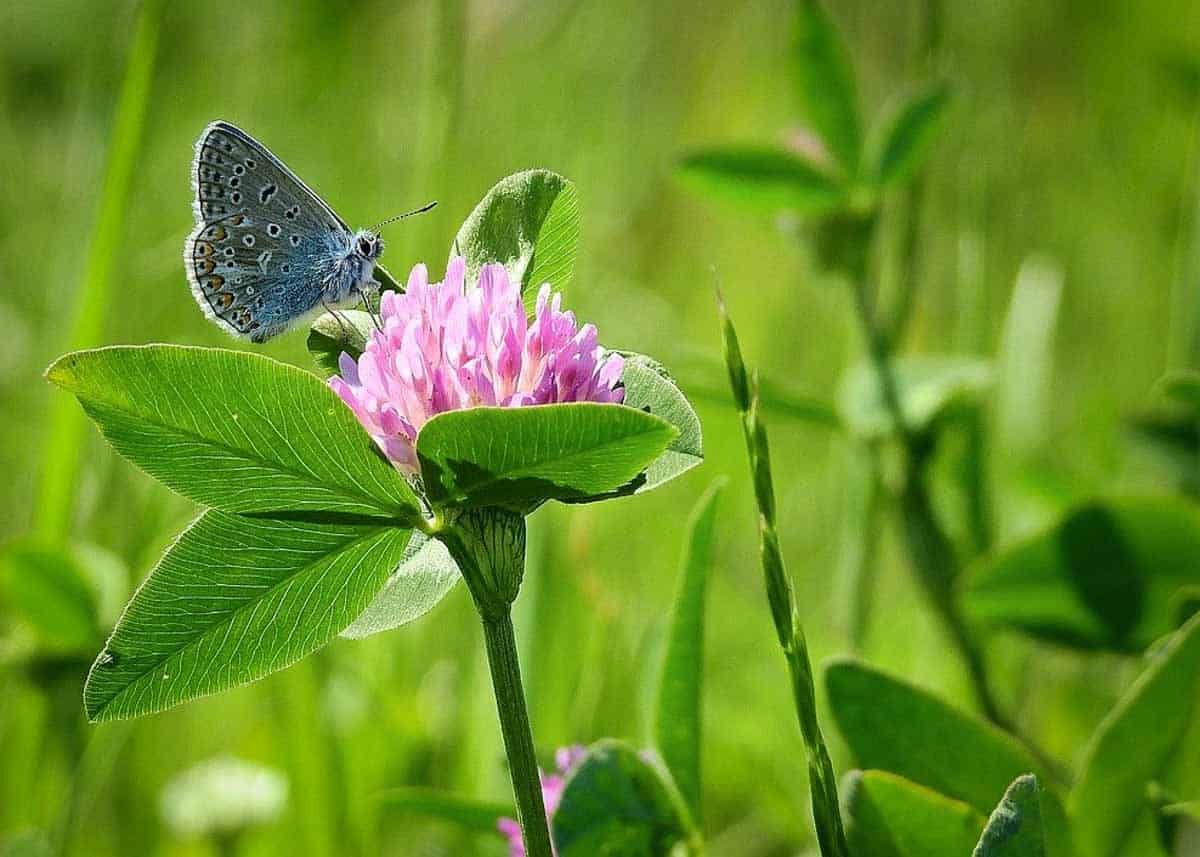
Clover
There are many varieties of clover in bloom during the summer in Eastern Kansas. Look for the fine, white petals of Dutch clover tinged with pink lowlights or the inversely colored red clover with its pinkish-purple petals with white lowlights. This hearty Kansas wildflower is good for bees and makes good quality hay and pasture land for larger creatures.

Coneflower
With a consistently distinctive cone, look for sunflower yellow petals of the prairie coneflower or the pinkish/purple petals of the purple coneflower on dry prairies and along roadsides throughout Kansas.
Coneflowers are an important medicinal plant to Native Americans. The long slender leaves of the pale purple coneflower is used to treat burns. And the butterscotch-colored leaves of the prairie coneflower is used to treat poison ivy.

Goldenrod
The tall, thin goldenrod, with its burst of mustard-yellow flowers, is part of the sunflower family. Look for this native Kansas wildflower mixed with native prairie grasses. While it typically begins blooming in the middle of summer, goldenrod will bloom through October.
Native Americans use goldenrod to make medicinal tea to treat insomnia. And, when distilled into an essential oil, goldenrod can be diffused to create a relaxing environment and help promote a good night’s sleep.

Indian Paintbrush
To me, Indian paintbrush looks like a bright reddish-orange clover. But it’s apparently not part of the clover family. Search for Indian paintbrush in the wet ground along streams, in damp prairies, and in open meadow clearings in wooded areas.

Larkspur
This tall thin Kansas wildflower is a member of the buttercup family. Look for the prairie larkspur’s white flowers or the dwarf larkspur’s deep purple blooms in rocky woods, along stream banks, and at the bottom of ravines.
Mallows
Mentioned above in the list of Kansas spring flowers, mallows also bloom throughout the summer months.

Milkweed
There are nearly 20 different types of milkweed in eastern Kansas including common milkweed, also known as butterfly milkweed. Look for its reddish-orange blooms in dry, sandy, or rocky prairies. This Kansas wildflower is so important to the monarch butterfly because it is the only food monarch caterpillars will eat, so it is the only place monarchs will lay their eggs.
Sage Advice: If you live in Eastern Kansas, consider adding one or more of these perennial native Kansas flowers into your landscaping. Not only will you create a sanctuary for butterflies and be treated to their blooms year after year, but these plants are incredibly low-maintenance.

Plains Coreopsis
With yellow petals and a reddish brown center, the plains coreopsis blooms remind me a bit of a pansy. However, they are another member of the sunflower family. At two to four feet tall, look for this Kansas wildflower in roadside ditches and in sandy areas of the Kansas plains.

Sage
From the blue flowers of the pitcher sage to the fuzzy, light blooms of the white sage, this perennial is found in open prairies and open woods. The Native Americans used sage for a wide variety of things. Crushed sage leaves were used to treat headaches. Chewed sage leaves were applied to insect stings and spider bites. And entire sage leaves were wiped under arms and on the soles of feet as a deodorant.

Sunflower
These sunny wildflowers are synonymous with the state of Kansas. After all, this state flower gives Kansas the nickname the Sunflower State. Look for wild sunflowers in open areas and along roadsides throughout the entire state of Kansas. The yellow petals and dark black seeds of wild sunflowers can be made into a dye. And high-quality silage can be made from the rest of the plant.
There is a fine line between Kansas wildflowers and weeds. While the sunflower is the state flower of Kansas, across the border to the north, this Kansas wildflower is consider a noxious weed in Iowa.
Related Article: 13 Things to Know BEFORE You Visit the Grinter Farms Sunflower Fields

Don’t confuse wild sunflowers (the Kansas state flower) with cultivated sunflowers (a taller variety grown for seeds and oil). Wild sunflowers bloom throughout the summer throughout Kansas. The sunny flower fields in Kansas full of planted sunflowers typically flower in late August and early September.
Related Article: 100+ Sunflower Quotes for Instagram Captions

Verbena
This branched wildflower can be found near springs, on the edge of woods and thickets, and in gravelly soil. Look for verbena blooms in a range of colors from soft white to lilac to magenta.
Wildflowers that Bloom in the Fall
These are some of the native Kansas flowers that bloom in the fall months of September, October, and November.

Aster
Asters are a common Kansas wildflower with many varieties ranging from Drummond’s aster to the New England aster. Looking at the petals of the aster, it’s easy to see the daisy family resemblance. Although asters come in a variety of colors, all of them consistently attract butterflies, bees, and other pollinators which is good for the farms and gardens of eastern Kansas.

Beggar-Tick
Finishing up this guide to Kansas wildflowers is the beggar-tick. Found in wet areas along streams, river banks, and the edge of ponds, this native plant stands around eight to ten inches tall where it might be lost among the other greenery except for the pop of color from this small, orangish-yellow flower.
Additionally, these flowers from the Spring and Summer Kansas Wildflower lists above continue to bloom well into the fall months in eastern Kansas, delivering a final burst of color before winter’s dreaded arrival:
- Black-Eyed Susan
- Clover
- Goldenrod
- Sage
- Verbena
What Kansas Wildflowers are Your Favorite?
Where in Northeastern Kansas do you like to search for your favorite wildflowers? Share your thoughts in the comments section below.
Thank you for sharing!





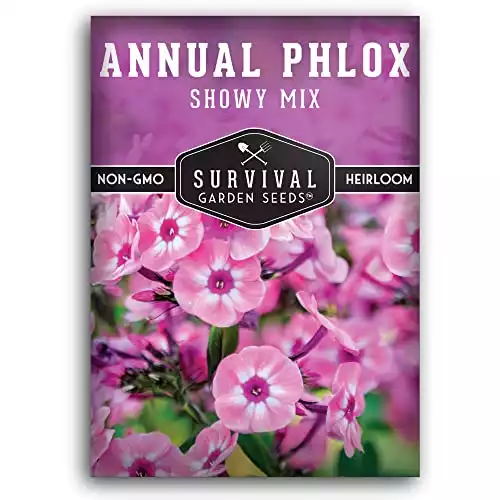










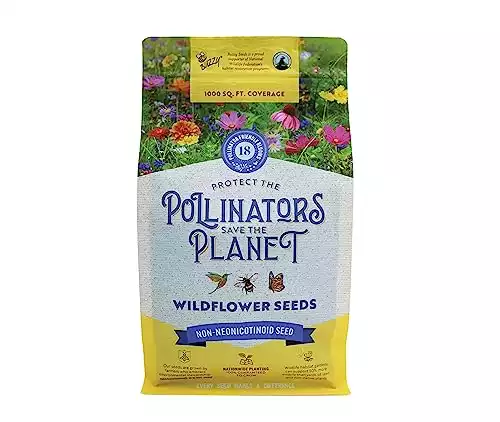


I love all flowers. To me that’s the only good thing about Spring. I love black eyed Susie’s. In Ontario we get a lot of trillium on our trails. It’s the Ontario file and there’s a fine for picking them.
I guess the fine ensures that there’s plenty of trillium viewing for all!
What a fun post! I would absolutely love an overview like this on Minnesota (my home state) wildflowers! This is so informative!
Oh, I’m so glad you loved it! I absolutely loved my time in Minneapolis last summer and would be awfully thrilled to explore more of the North Star State hiking and photographing her flowers! <3
If you enjoy wildflowers I suggest that you find someone at the County SWCD or a local biology teacher or DNR staff that knows the native plants and arrange to spend some time with them in the field learning what the plants are.
Great tip. Thanks for sharing, Bruce!
An interesting and insightful read. Fascinating to learn that sage has been used as a deodorant.
Awesome post! What a great guide and resource!
Very nice pictures!
I learned so much in this post all while enjoying looking at these stunning wildflowers.
I’m so glad nature has a way of beautifying our lands! I travel for flowers!
These are all so pretty, but I especially love the sunflowers! Those are a lot less prevalent up here in northwest Iowa .
Maybe that’s because sunflowers are listed as noxious weeds in Iowa… 🙂
I love this post. My family rolls their eyes at me having to identify flowers and trees and birds on every hike. LOL
I really like this format for your posts with the “related articles” and “Pro tips”!
I’ve always liked day lilies. We used to find them on the side of the road near my parents’ house in Leavenworth, KS. They always remind me of hot Kansas summers, with cicadas providing scalp-tingling background music.
That’s a fantastic memory, and it soooooo describes summertime in eastern Kansas! <3